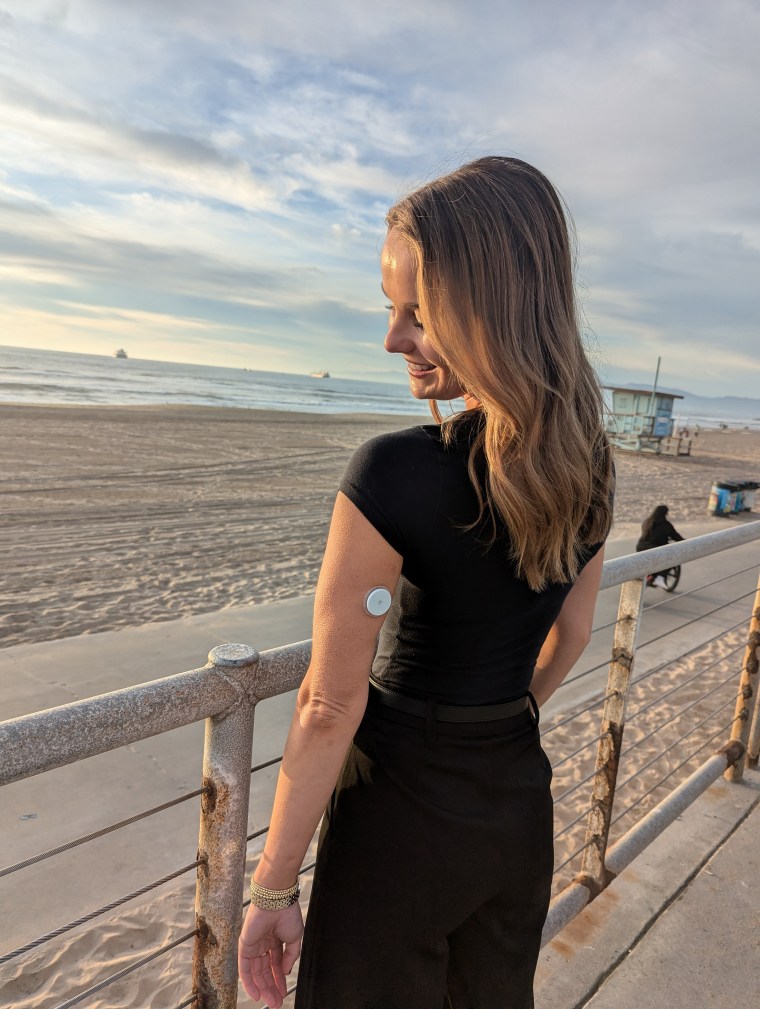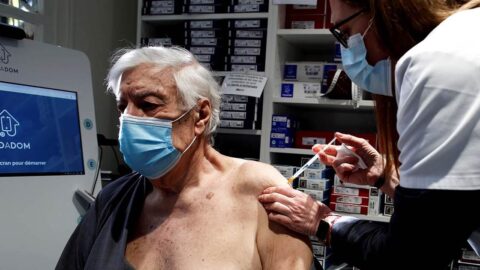Is there a benefit for healthy people to track their blood sugar?
Measuring blood sugar has joined sleep and exercise tracking as wellness trends, with some longevity experts claiming that reducing fluctuations throughout the day can help protect against heart disease, even for people who don’t have diabetes.
Continuous glucose monitors, or CGMs, are small devices that track blood sugar in real time and can tell wearers how their bodies are reacting to stress, food, sleep or exercise. New versions attach to a user’s arm and can pair with a smartphone to give blood sugar readings throughout the day. CGMs, which the Food and Drug Administration first approved in 1999, have traditionally been prescribed only to patients with diabetes.
More recently, the FDA has approved two blood sugar monitors for over-the-counter use, making them available to anyone without prescriptions. As a result, people who don’t have diabetes are increasingly promoting them on social media sites like Reddit to help with weight loss or to monitor the benefits of exercise.
Shannon Sackley, 30, a Realtor in Los Angeles, doesn’t have diabetes but has been wearing a blood sugar tracker for a couple of months after having watched a friend with diabetes use one.
“I think it’s exciting and it’s just amazing that you can see how food affects your body,” she said. “I think it’s really valuable to have.”

Previously, diabetic patients had to monitor blood sugar with finger pricks, painful, repetitive procedures that gave only a moment-in-time glucose reading. The finger prick gives a drop of blood that goes into a machine to provide a blood sugar reading.
Dr. Michael Natter, an endocrinologist at NYU Langone Health and a diabetic, compared finger pricking to trying to “fly an airplane with a blindfold on.”
“You know you’re in the sky, you know you’re going somewhere in the vicinity, but you don’t know your direction or how fast,” he said. “Continuous glucose monitors are a fantastic, revolutionary device.”
What’s a normal blood sugar?
Blood sugar can vary throughout the day, and it is typically lower in the morning before we eat, as monitored by a test called “fasting blood sugar.”
A normal blood sugar reading when fasting is typically 70 to 100 milligrams per deciliter (mg/dL), said Dr. Vijaya Surampudi, an endocrinologist and nutrition specialist at UCLA Health.
After we eat, our bodies break food down into its building blocks of carbohydrates, proteins and fats. Carbohydrates, which are found in high amounts in foods like bread, rice and pasta, are directly converted to sugar, or glucose, which is then absorbed into the bloodstream.
After people eat, it’s completely normal for their blood sugar to rise, Natter said. However, it can be a problem if the number rises too high.
Surampudi said, “If someone is not diabetic, anything under 140 is acceptable.” For someone with diabetes, the ideal level should be below 180, she added.
It’s not just what we eat. High levels of stress can disrupt a person’s blood sugar balance, and they have been linked to diabetes. Sleep is also “intricately connected” to blood sugar, according to the National Sleep Foundation. In a 2022 study in patients without diabetes, researchers found that higher blood sugar readings on CGMs were linked with less total sleep time.
“If we don’t get enough sleep, it puts our body under a certain amount of stress,” Natter said.
That stress can lead to high levels of stress hormones like cortisol and epinephrine, which ultimately cause rises in blood sugar.
Should I be worried about blood sugar spikes?
There’s not much research yet on the value of tracking blood sugar spikes in people who don’t have diabetes, Natter said. He noted that the devices weren’t designed or calibrated for a nondiabetic population, so it’s hard to know what the readings should be for a healthy person.
“I don’t think we know enough about how minute variations of glucose really factor into optimal performance,” he said.
It’s normal for a healthy person’s sugar levels to change throughout the day. Being too aware of spikes in blood sugar could be a source of anxiety.
“Blood sugar is a dynamic value that we look at,” Natter said. “It’s not supposed to be 100 all day.”
During a recent study using CGMs on patients without diabetes, researchers at Boston University were surprised by blood sugar spikes during the day.
“We saw a lot more elevated glucose levels than I think we were expecting in people without diabetes,” said the lead author of the study, Nicole Spartano, a researcher who specializes in diabetes and weight management at the Boston University Chobanian & Avedisian School of Medicine.
Specifically, they found that even participants without diabetes spent three hours a day with blood sugar levels higher than 140. For 15 minutes a day, the numbers even climbed higher than 180.
In other words, even healthy people can have high sugar spikes, and it’s not clear yet whether they pose any long-term risks.
“As these devices are now more available, people are going to wear them, and people are going to see really high glucose levels and potentially be really worried about that,” Spartano said. “Hopefully, people will be able to look at our data and compare their own to what they’re finding within themselves.”
Are there any proven health benefits?
Experts agree that there is a big potential upside to the monitors’ being available over the counter — catching cases of diabetes earlier for people with family histories or potentially preventing them. The monitors could help users learn which foods trigger blood sugar spikes and cut them out of their diets.
“People who have pre-diabetes may be really interested in using this because they’re trying to prevent the development of diabetes,” Surampudi said.
It’s not uncommon for diabetes to be diagnosed late, and estimates suggest that 240 million people globally are diabetic and not aware. In the United States alone, an estimated 9 million people met criteria for diabetes but didn’t know it, according to the Centers for Disease Control and Prevention.
Diabetes can be deadly if it isn’t diagnosed and treated in a timely manner. If it’s left untreated, it can lead to nerve damage, kidney failure and even severe wounds that may require amputation.
The monitors could also help women with polycystic ovarian syndrome — a hormonal disorder that is often linked to infertility, weight problems and irregular or missed periods — avoid long-term complications.
“Women who struggle with PCOS struggle with insulin resistance,” Surampudi said. “They are trying to learn what foods they can eat or what foods will not raise their blood sugar.”
Sackley said she feels using the device has helped her make healthier lifestyle choices.
“I cut out dates because they are very high in sugar and ‘healthy’ protein bars because they would make my glucose spike alarmingly high,” she said. Other changes include walking after meals and even tweaking the order in which she eats different food groups.
Battling sleep problems her whole life, she has found that avoiding sugar spikes late in the evening has improved her sleep and her energy levels the next day.
Research shows that eating vegetables and protein before carbohydrates can lower sugar spikes. That is thought to be due to slower emptying of the stomach, preventing high levels of sugar from being absorbed quickly into the bloodstream.









Recent Comments